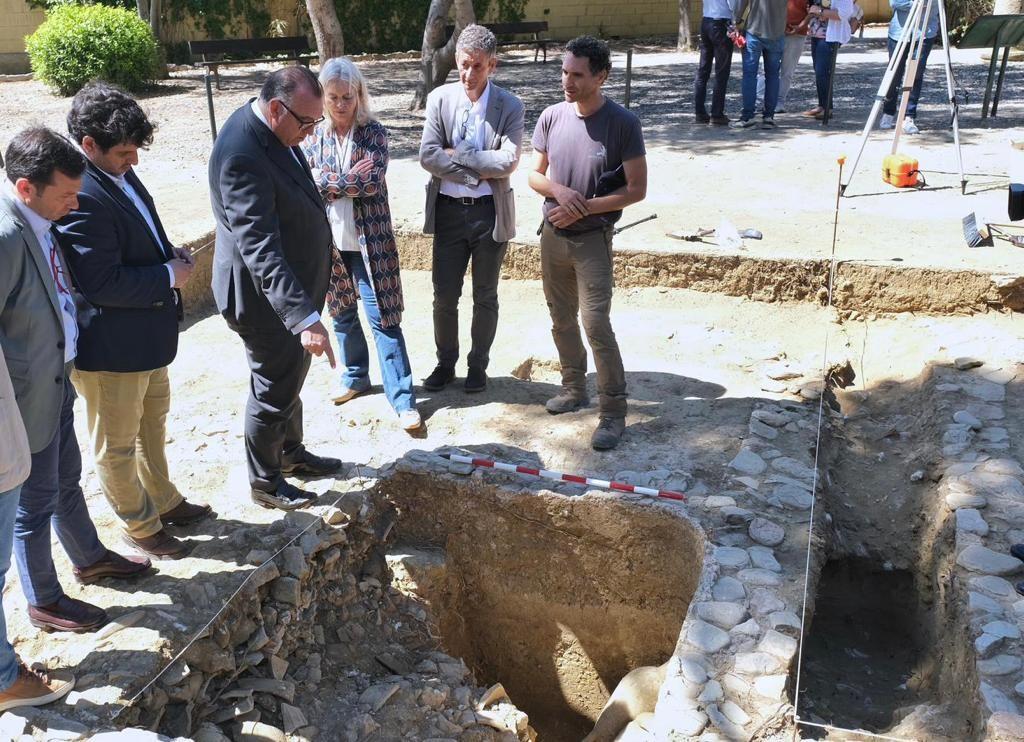The archaeological site of Carteia, located in the municipality of San Roque, saw a 50% increase in visitors during the first two months of 2023, compared to the previous year. The space, managed by the Andalusian Agency of Cultural Institutions (AAIICC), is the first colony established by the Romans outside the Italian peninsula, after the Senate granted the title of Colonia Libertinorum Carteia in the year 171 BC.
The Minister of Tourism, Culture and Sports of the Junta de Andalucía, Arturo Bernal, visited the site on Monday, accompanied by the subdelegate of the Junta de Andalucía in the Campo de Gibraltar, Javier Rodríguez; the delegate of the Andalusian Government, Mercedes Colombo; and the territorial delegate of Tourism, Culture and Sports, Jorge Vázquez. During the visit, Bernal highlighted the relevance of this space as "a historic enclave and one of the main points of fishing activity in the area before and now, linked to salted fish and conserves, and the production of garum," he recalled.
In this regard, experts from the University of Cádiz are currently carrying out a line of work and research on this subject "not so much linked to the urbanistic vision, but especially to industry, linked to the industry and the product that defined this and other areas," Bernal added. The Minister expressed his satisfaction with the progress of this work and the effort of the professionals. "The teams are perfectly formed. We currently have seven people working at this site, in coordination with the technicians of the Cadiz university institution," he emphasized.
"Currently, two lines of research are being carried out in the forum area. One, of purely archaeological tasks, on a 42-meter-long wall," Bernal pointed out. On the other hand, he recalled that the technicians are working on the consolidation of a specific area of the land, after some landslides in a retaining wall, "to be able to maintain the prospection and archaeological work in the area, which is already very defined," the Minister reiterated, highlighting the "normality" in the overall Carteia.
The archaeological site of Carteia is a vast expanse of land a few meters from Guadarranque Beach, where visitors can see a Punic wall, a Roman temple from the republican era, a basilical pool, a thermal building, several Roman houses or domus, a salting factory, and a large building from the time of Emperor Augustus, among other remains.
In addition, in contemporary times, during World War II, this space once again became relevant due to its geographical location. More than 500 military fortifications were built in this area as part of the Defense Plan of the Campo de Gibraltar, to guarantee the integrity of Spanish territory against a hypothetical allied attack from Gibraltar.
Specifically, three bunkers were built in Carteia that were never used in military action, although they were manned. One of them has been turned into a museum and opened to the public. It is a mixed nest with three rooms, equipped with machine guns and an anti-tank gun. One of the shooting rooms has been faithfully recreated. In the central room, the largest one, the landscape that could be seen from it in the 1940s is reproduced behind the gun slot, and various war utensils, plans, and photographs are exhibited. The third room has been stripped of its military character, and sociocultural aspects of postwar Spain are evoked in it, with graphic and sound resources, including a radio from the period.
Thus, the space remains open normally, responding to the growing interest in knowing this Cultural Heritage Site, which was a Roman colony near the Strait of Gibraltar. Specifically, Carteia opens its facilities from 10:00 a.m. to 2:00 p.m. on Wednesdays through Sundays. To arrange a visit, it is necessary to request it in advance. These tours are guided by personnel from the center, once the requesting groups have been formed. There are visits every hour at 10:00 a.m., 11:00 a.m., 12:00 p.m., with the last one at 1:00 p.m.
